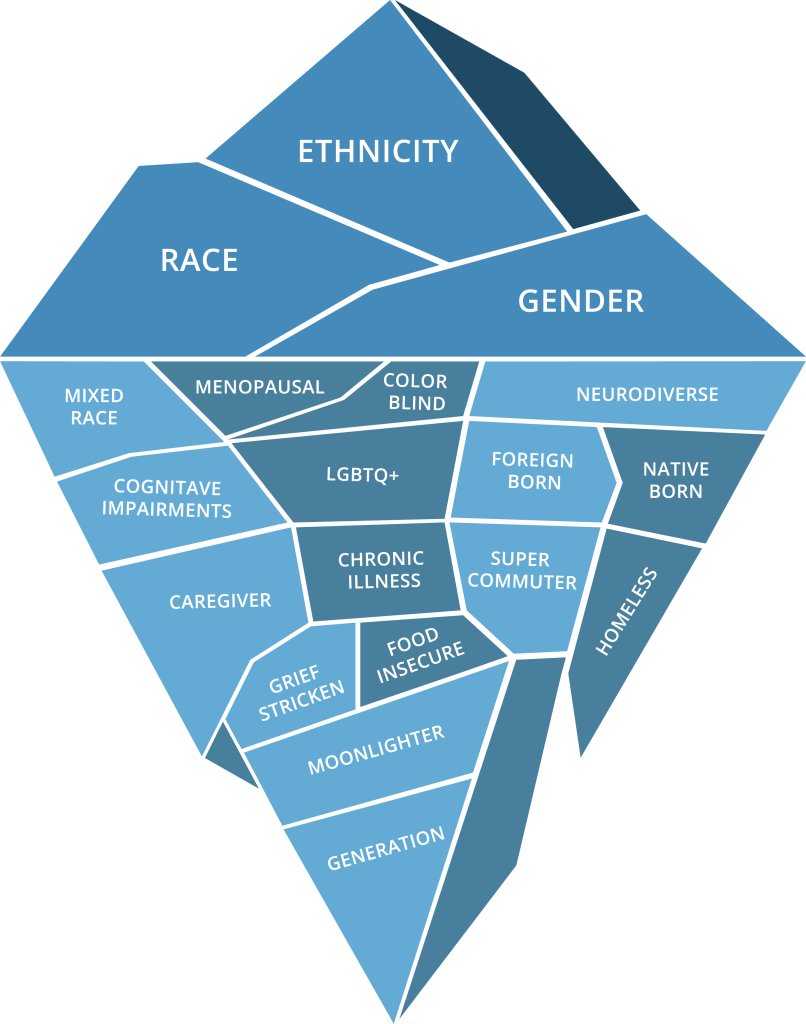North Carolina is one of the fastest-growing states in the country, experiencing robust economic growth through both an increasing population and the attraction of new businesses. Between 2020 and 2023 alone, the state’s population grew by 3.8%, outpacing both the national (1.0%) and the South’s (3.1%) rates of population growth (see Figure 1).1 As the state evolves politically and demographically, the November election will address several critical issues that will shape its future. Jim Johnson, director of the Urban Investment Strategies Center and William R. Kenan Jr. Distinguished Professor of Strategy and Entrepreneurship at UNC Kenan-Flagler Business School, discusses in this interview how his research sheds light on these key issues and offers insights into the challenges and opportunities facing North Carolina.
Your research spans a variety of topics, from demographic shifts to economic development. What overarching patterns or themes have emerged, and why are they critically important in North Carolina today?

Jim Johnson: Over the past three decades, North Carolina has been one of the nation’s major migration destinations. People moving from other states and abroad were responsible for 95% of North Carolina’s growth (396,022) between 2020 and 2023 (see Figure 2). And migration has accounted for nearly all of North Carolina’s population growth of over 4 million people since 1990.2
For two consecutive years, North Carolina ranked as America’s top state for business. However, we recently dropped to No. 2 in CNBC’s rankings, and there has been a notable slowdown in the rate of in-migration alongside an increase in out-migration. Between 2022 and 2023, the state's net migration rate dropped from 317 newcomers daily to 220, signaling that some key factors – like affordability, infrastructure and inclusiveness – might be slipping.3
While North Carolina remains attractive as a place to live and do business, the state may be losing some of its shine because of changes in quality of life metrics, including crime, childcare, healthcare, environmental quality and inclusiveness. For instance, childcare shortages have led to increased costs, with the average cost of infant care now exceeding $9,100 annually in the state.4 This strains working families and poses challenges for retaining talent.
Moreover, recent migration-induced growth has masked profound changes in the state's population composition, affecting our ability to produce the workforce required for economic development. Our growth is largely driven by people of color, who contributed to 69% of the state’s net population increase between 2020 and 2023 (see Figure 3).5 Yet, we are pushing back on diversity, equity and inclusion precisely when we need all hands on deck to remain innovative and competitive.
North Carolina’s population is also aging. Between 2020 and 2023, the state's senior population grew by 11.2%, outpacing the total (3.8%), preschool age (1.1%), school age (0.5%) and working-age (2.9%) population growth rates (see Figure 4).6 This demographic shift, coupled with normal age-related mortality, deaths of despair among prime working-age males, and declining male college enrollment, is creating a demographic depression in our labor market. For example, the state has seen a 20% increase in deaths of despair – particularly opioid overdoses – since 2018, which has disproportionately affected men ages 25-44.7 These deaths represent a long-term economic loss, as each of these individuals could have contributed decades of productivity to the state’s economy.
The collective impact of these disruptive demographic trends have far-ranging and geographically expansive implications for the state’s ability to create and maintain a competitive workforce, especially when viewed in conjunction with below-replacement-level fertility – another long-standing trend affecting the size and composition of the population of our nation and the state. Emblematic of both the scope and magnitude of the impact of these combined forces, deaths exceeded births in 80 of North Carolina’s 100 counties between 2020 and 2023 (see Figure 5).
Your work on the nursing profession emphasizes the importance of understanding "iceberg demographics." Can you discuss how these hidden demographic trends also influence North Carolina’s attractiveness as a migration destination?

Jim Johnson: The concept of "iceberg demographics" arises from the pushback on race and gender equality, coupled with growing labor activism. Post-COVID, we’ve witnessed increased labor activism, including walkouts, strikes, resignations and pushback on mandatory return-to-office mandates. During the pandemic, people reflected on their lives, and many challenges workers face today are not visible to the naked eye, much like an iceberg.
Iceberg Demographic Schema

These "iceberg demographics" are the invisible attributes that shape individuals' lives but are not readily apparent. For example, over 60% of women ages 45-54 in the workforce are managing menopausal symptoms, but very few companies have policies or resources in place to accommodate them.8 Understanding these hidden factors is crucial for successfully recruiting and retaining workers today. People analytics will become the norm, as companies will need to modify workplace policies, practices and procedures to accommodate the diverse needs of their employees. In a state like North Carolina, where net migration has been a significant driver of growth, these invisible demographics could greatly influence whether people choose to move here or take their talent elsewhere.
Given demographic headwinds such as an aging population and below-replacement-level fertility, what strategies should North Carolina adopt to maintain its economic vitality?

Jim Johnson: First and foremost, we need to push for comprehensive immigration reform at the national level. As an aging state with declining fertility, we need labor, and if we can’t reproduce it, we must import it. Immigration is an age-selective process, and young immigrants are crucial for our labor force. Currently, immigrants account for roughly 12% of North Carolina’s workforce.9 Without them, sectors like construction, healthcare and agriculture would face critical labor shortages.
Additionally, we should invest in age-friendly infrastructure and the longevity economy. North Carolina’s senior population will exceed 2.8 million by 2035, presenting enormous business and job opportunities in fields like healthcare, housing and elder care services.10 Age-friendly cities are also key for retaining older residents, ensuring they remain active participants in the economy.
Embracing a "bring back our own population" strategy can help rebuild dying counties and those experiencing biological decline. Currently, 80 counties in North Carolina have more deaths than births.11 By incentivizing young and middle-aged talent – particularly those with remote work opportunities – to return to their hometowns where they have location-specific capital in the form of aging parents, grandparents and other relatives, we can begin reversing these trends.
How do you see the future of North Carolina’s demographic trends affecting the state’s education system and workforce readiness?

Jim Johnson: We are facing significant challenges due to deaths of despair, declining fertility and the sex ratio imbalance in higher education. The sex ratio in higher education has been 60% female and 40% male for four decades, creating a shortage of marriageable males and affecting family structure and child-rearing.12 As a result, the number of births in the state has declined sharply. In 2022, North Carolina recorded just over 118,000 births, compared with over 132,000 in 2008.13 This declining fertility rate is leading to a potential enrollment cliff in both K-12 and higher education.
Additionally, deaths of despair are concentrated among prime working-age males, ages 25-44, whose premature deaths rob the state of critical labor force contributions.14 For example, opioid-related deaths have increased by 35% since the pandemic began, contributing to the loss of nearly 14,000 potential workers over the past decade.15 These trends will affect our ability to cultivate a workforce that is competitive on a national and global scale.
Your coming research suggests that anti-DEI policies could hinder North Carolina's growth. Can you explain how these policies might affect the state's ability to attract and/or retain a diverse talent pool?

Jim Johnson: Anti-DEI policies could lead to a decline in North Carolina's attractiveness as a destination, as people increasingly vote with their feet and choose more inclusive environments. We know from a recent survey that 88% of young professionals under 35 would consider not taking a job or moving to a state that did not support reproductive rights or DEI initiatives.16 With 80 counties where deaths exceed births, we cannot afford to lose anyone.17
Pushing an anti-DEI agenda hampers our ability to develop and retain the talent needed to move our state forward. It’s not just a moral issue – it’s an economic imperative.
Based on your findings, what are the most critical actions that North Carolina must take to ensure it remains a top destination for business, innovation and quality of life?

Jim Johnson: Embracing diversity as a form of enlightened self-interest is essential given the disruptive demographic trends we are experiencing. We must address deaths of despair and the loss of young, working-age individuals to premature disabilities and deaths. Currently, North Carolina has one of the highest rates of opioid-related deaths in the Southeast, with over 3,000 deaths annually.18 Tackling this issue head-on is vital for the health of our workforce.
Developing an affordable workforce housing strategy for public school teachers and civil servants is crucial. Right now, over 50% of North Carolina’s teachers report struggling to find affordable housing near their schools.19 Demonstrating a commitment to climate and environmental justice will also enhance our state’s appeal, as extreme weather events and environmental degradation increasingly affect where people choose to live and work.
Investing in R&D in the business of aging and creating age-friendly infrastructure will capitalize on opportunities presented by an aging population. Finally, rebranding North Carolina as a place where empathy and compassion are core operating principles will help attract and retain talent. Prioritizing these actions will ensure that North Carolina remains a top destination for business, innovation and quality of life.
1 Annual and Cumulative Estimates of the Components of Resident Population Change for the United States, Regions, States, District of Columbia, and Puerto Rico: April 1, 2020 to July 1, 2023 (NST-EST2023-COMP) Source: U.S. Census Bureau, Population Division Release Date: December 2023
2 Annual and Cumulative Estimates of the Components of Resident Population Change for the United States, Regions, States, District of Columbia, and Puerto Rico: April 1, 2020 to July 1, 2023 (NST-EST2023-COMP). U.S. Census Bureau, Population Division Release Date: December 2023.
3 North Carolina Office of State Budget and Management. (2023). State migration trends and estimates: 2022-2023. Retrieved from https://www.osbm.nc.gov/data
4 Child Care Aware of America. (2023). The U.S. and the high price of child care: An examination of a broken system. Retrieved from https://www.childcareaware.org
5 Annual Estimates of the Resident Population by Sex, Race, and Hispanic Origin for North Carolina: April 1, 2020 to July 1, 2023 (SC-EST2023-SR11H-37). U.S. Census Bureau, Population Division Release Date: June 2024
6 Annual Estimates of the Resident Population for Selected Age Groups by Sex for North Carolina: April 1, 2020 to July 1, 2023 (SC-EST2023-AGESEX-37). U.S. Census Bureau, Population Division Release Date: June 2024
7 North Carolina Department of Health and Human Services. (2023). Deaths of despair report: Opioid overdose trends in North Carolina, 2018-2023. Retrieved from https://www.ncdhhs.gov
8 North American Menopause Society. (2023). Menopause in the workplace: Impacts and statistics. Retrieved from https://www.menopause.org
9 Migration Policy Institute. (2023). Immigrants in the U.S. states: Workforce data for North Carolina. Retrieved from https://www.migrationpolicy.org
10 North Carolina Office of State Budget and Management. (2023). North Carolina population projections: 2020-2035. Retrieved from https://www.osbm.nc.gov/data
11 North Carolina Department of Health and Human Services. (2023). Vital statistics report: Births and deaths by county, 2023. Retrieved from https://www.ncdhhs.gov
12 National Center for Education Statistics. (2023). Enrollment and graduation rates by gender in higher education: A 40-year analysis. Retrieved from
13 North Carolina Department of Health and Human Services. (2023). Birth statistics report: 2008-2022. Retrieved from https://www.ncdhhs.gov
14 North Carolina Department of Health and Human Services. (2023). Deaths of despair: Impact on the labor force in North Carolina. Retrieved from https://www.ncdhhs.gov
15 North Carolina Department of Health and Human Services. (2023). Opioid overdose trends and workforce impact: 2013-2023. Retrieved from https://www.ncdhhs.gov
16 Pew Research Center. (2023). Young professionals' attitudes towards reproductive rights and DEI initiatives in the workplace. Retrieved from https://www.pewresearch.org
17 North Carolina Department of Health and Human Services. (2023). Vital statistics report: Births and deaths by county, 2023. Retrieved from https://www.ncdhhs.gov
18 North Carolina Department of Health and Human Services. (2023). Annual opioid overdose death report. Retrieved from https://www.ncdhhs.gov
19 North Carolina Association of Educators. (2023). Teacher housing affordability survey: 2023 report. Retrieved from https://www.ncae.org


Shaping North Carolina’s Future with Jim Johnson